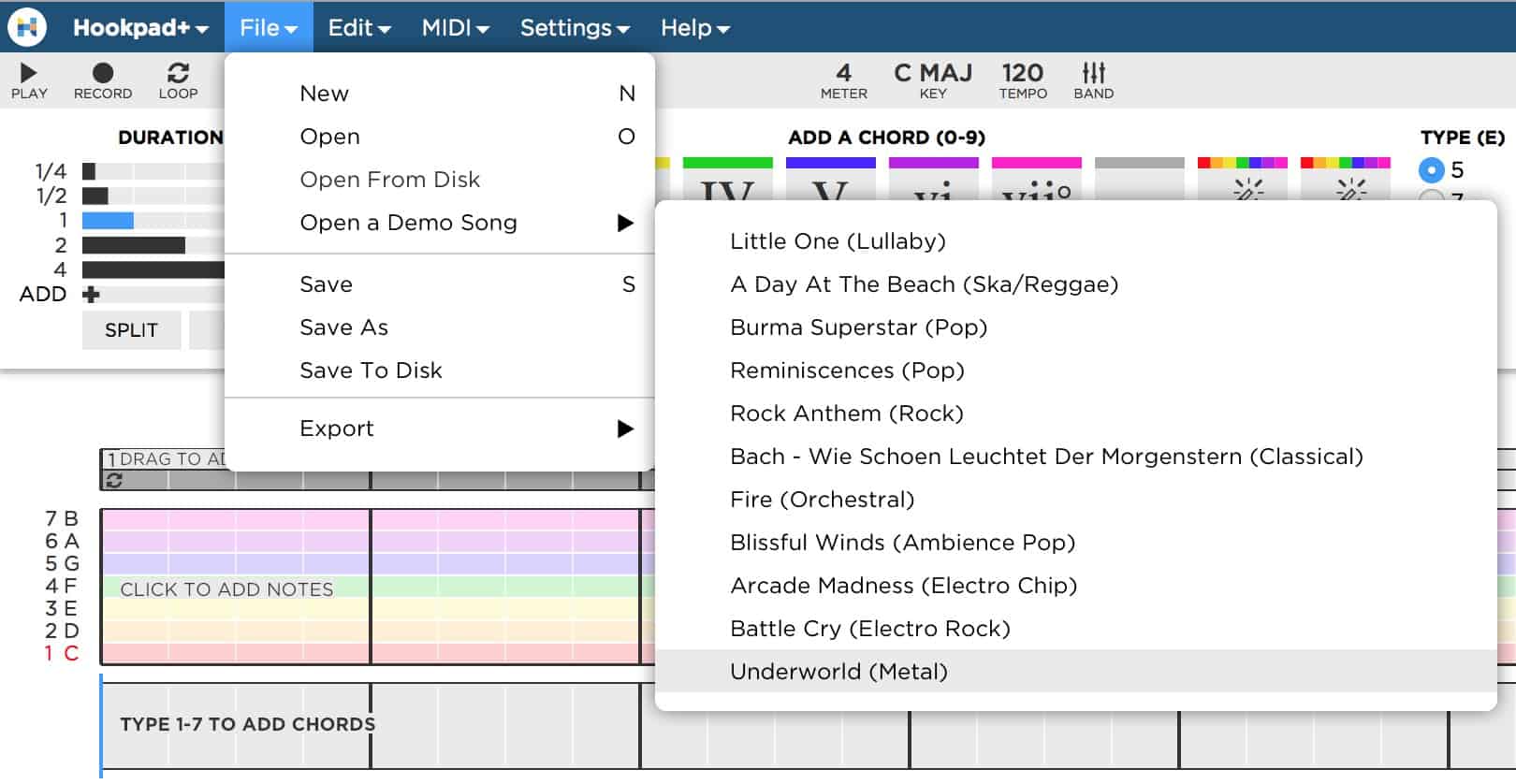Hookpad is a web app for music composition, and it’s also a killer way to learn about music theory. Hookpad and its companion theory app/book have been around for a while. The problem was, it only worked on the desktop. Hookpad 2 is a complete rewrite, and it works just great in mobile Safari. You can even save it to your home screen.
Hookpad 2, now on iOS

Photo: Hook Theory
Hookpad is a composing app that lets you add chords and notes, bar by bar, either by clicking, tapping or typing numbers on the keyboard. Notes can short or long, you can add rests, and borrow notes from other keys. When you’re done, you can export the result as a MIDI file, guitar tab, standard music notation file or MP3. Some of these export features, and other advanced features, require a subscription, but the basic song creation and editing is free.
So far, so good. But the thing that really sets Hookpad apart is the way it works with music theory, and the ties it has with a huge database of songs. This second feature lets you ask for suggestions (magic chords, in the app’s terms) for you next chord, based on the chord progressions of thousands of songs. This is a great way to get inspired.
But my favorite part is at the very basis of how Hookpad and Hook Theory work. To explain, I’ll show you a little bit of music theory.
A quick music theory lesson
Say you’re in the key of C Major. The notes in C are C D E F G A B. You can also write these as numbers. C=1, B=2, and so on. This also applies to chords (conventional notation uses Roman numerals for chords). Thus C Major is the I chord, and A minor is the vi chord.
Why bother with all this? What’s wrong with letters? A few reasons. One is that it makes it easier to see the structure of a song. All standard blues songs use the I, IV and V chords, and no others. A blues in C will use C, F and G. A blues in A will use A, D and E, but both of them are using I, IV and V.
This also makes it easier to transcribe a song from one key to another. If you know that a song uses a I V vi IV progression, you can play it in any key, just by plugging in the letters.
Using numbers this way is called relative notation (using letters is called absolute notation), and it also makes it easy to compare songs in different keys, but that use the same chord progression. That I V vi IV progression I mentioned earlier? It’s quite popular (warning: F-bomb):
Hookpad uses relative notation throughout, and this makes it really easy to construct great chord progressions, and to understand why the songs you love manage to drag such an emotional response from your dried-up little heart. And as I mentioned, it’s completely free unless you need the advanced features. Check it out, right now.


